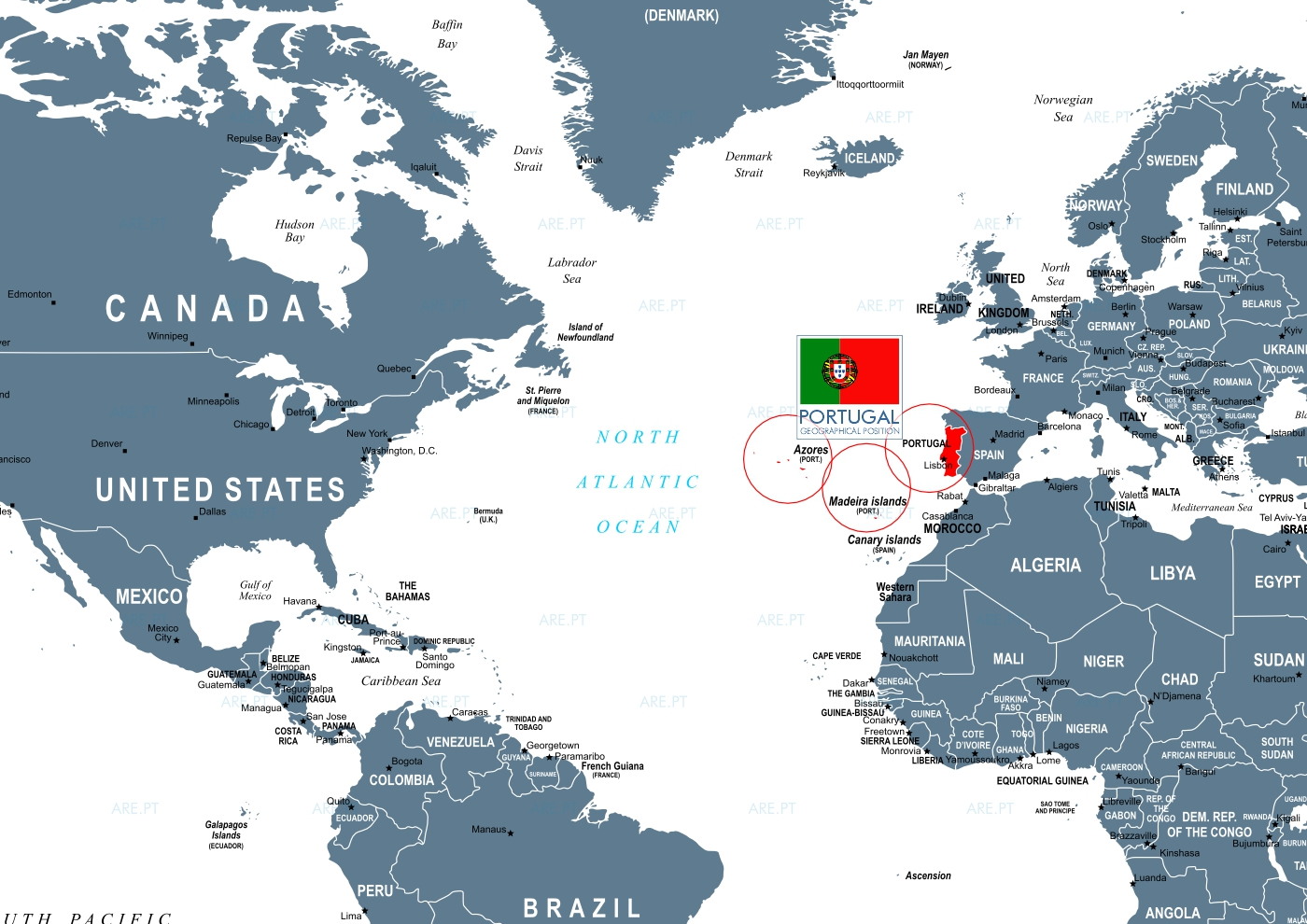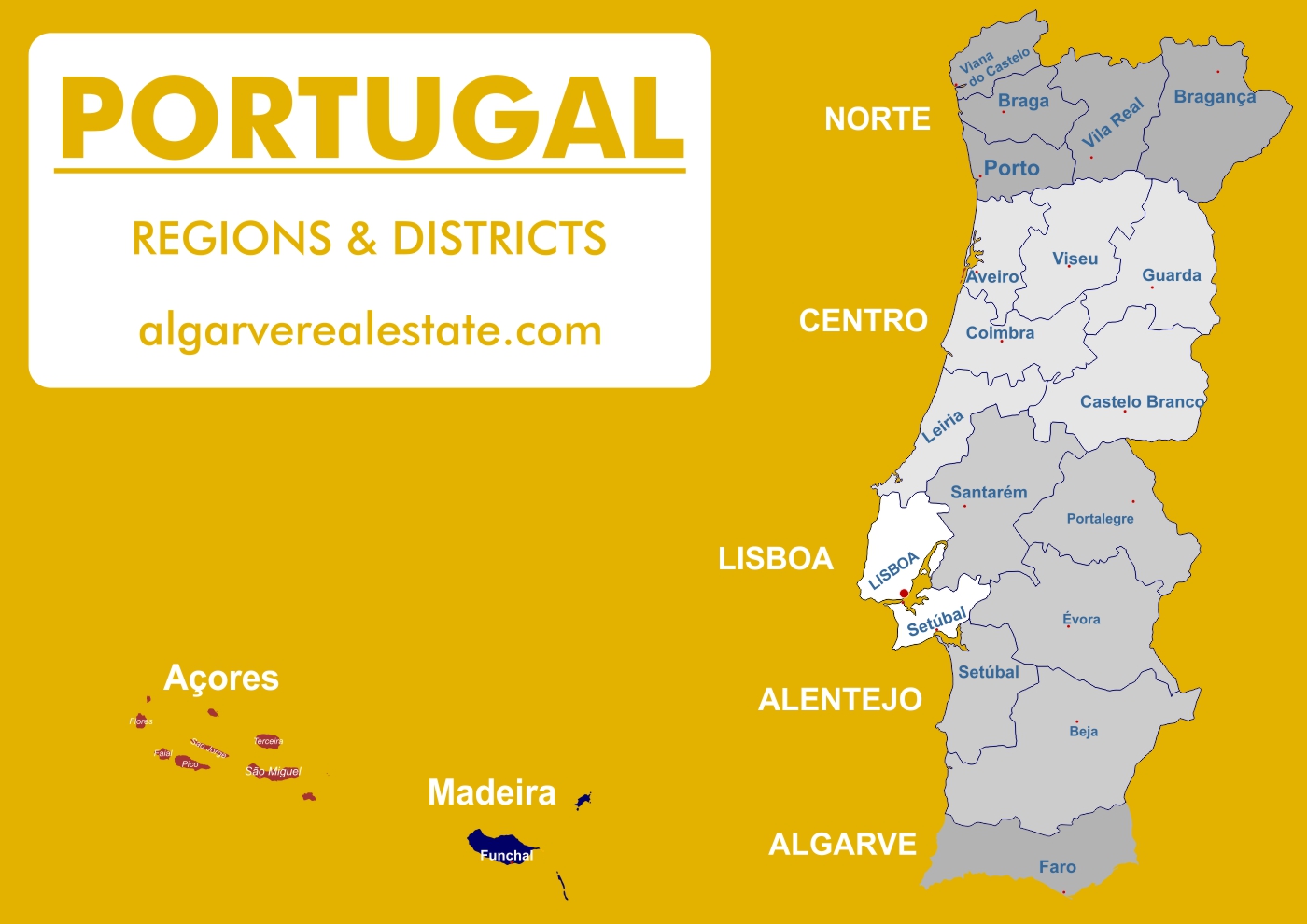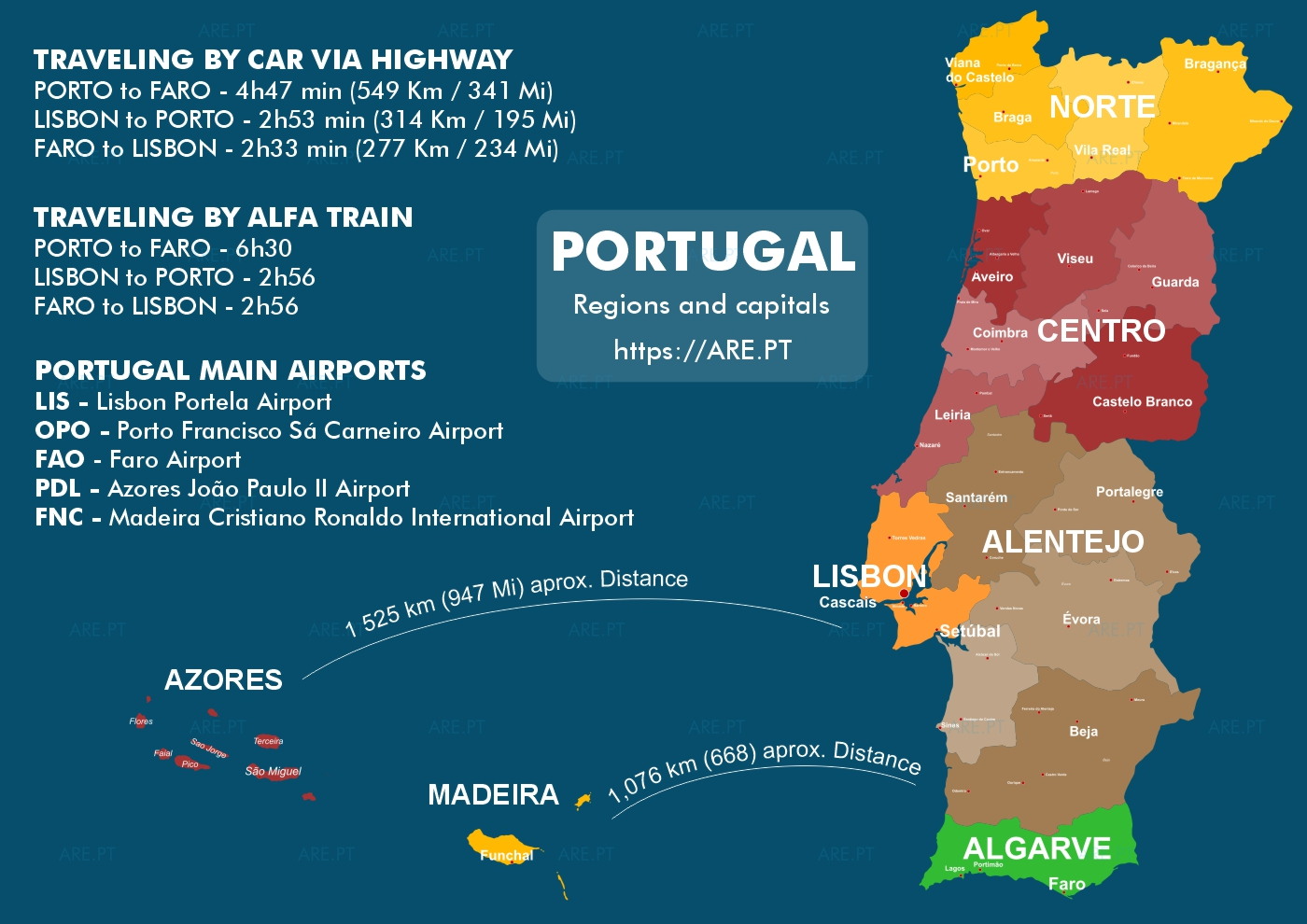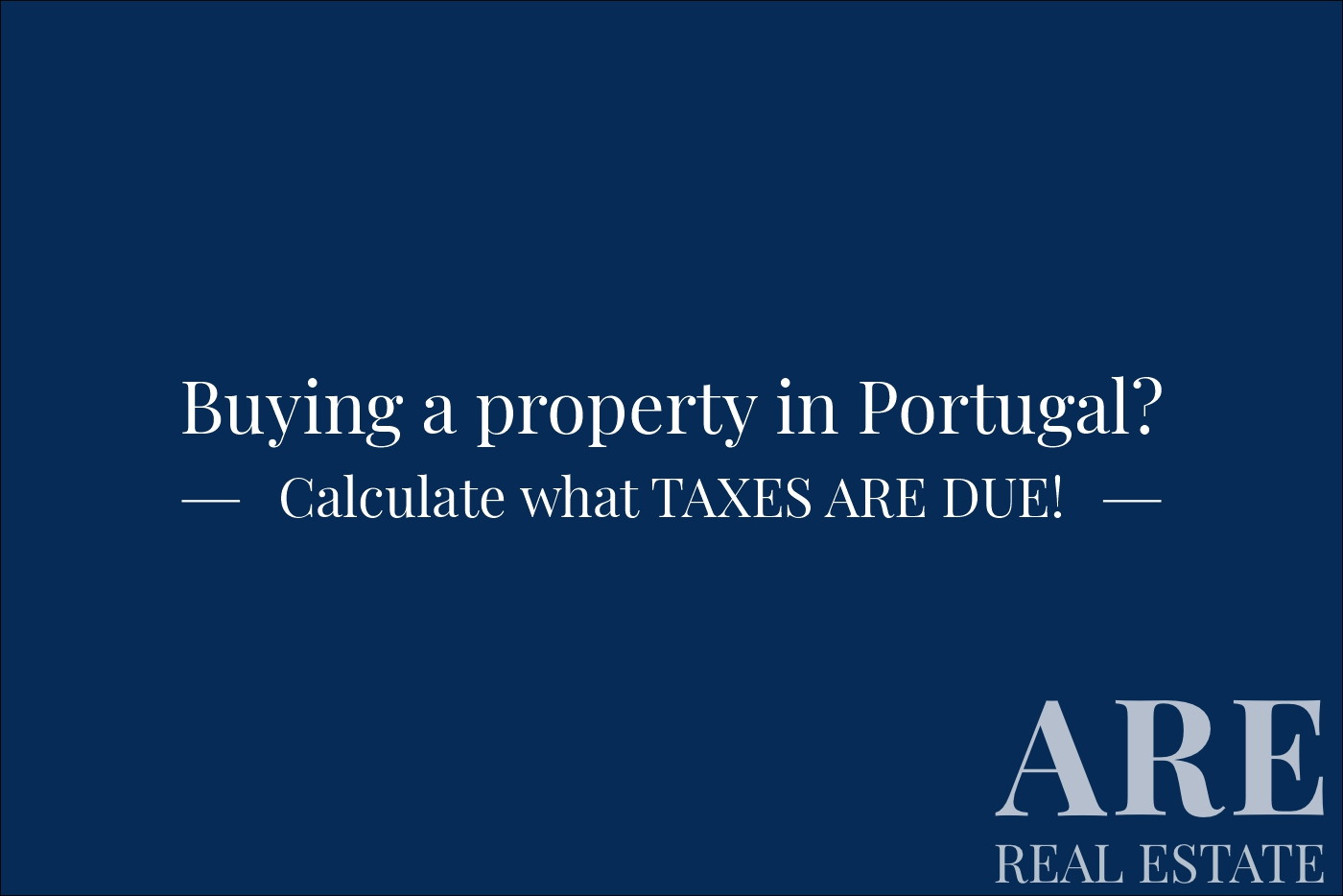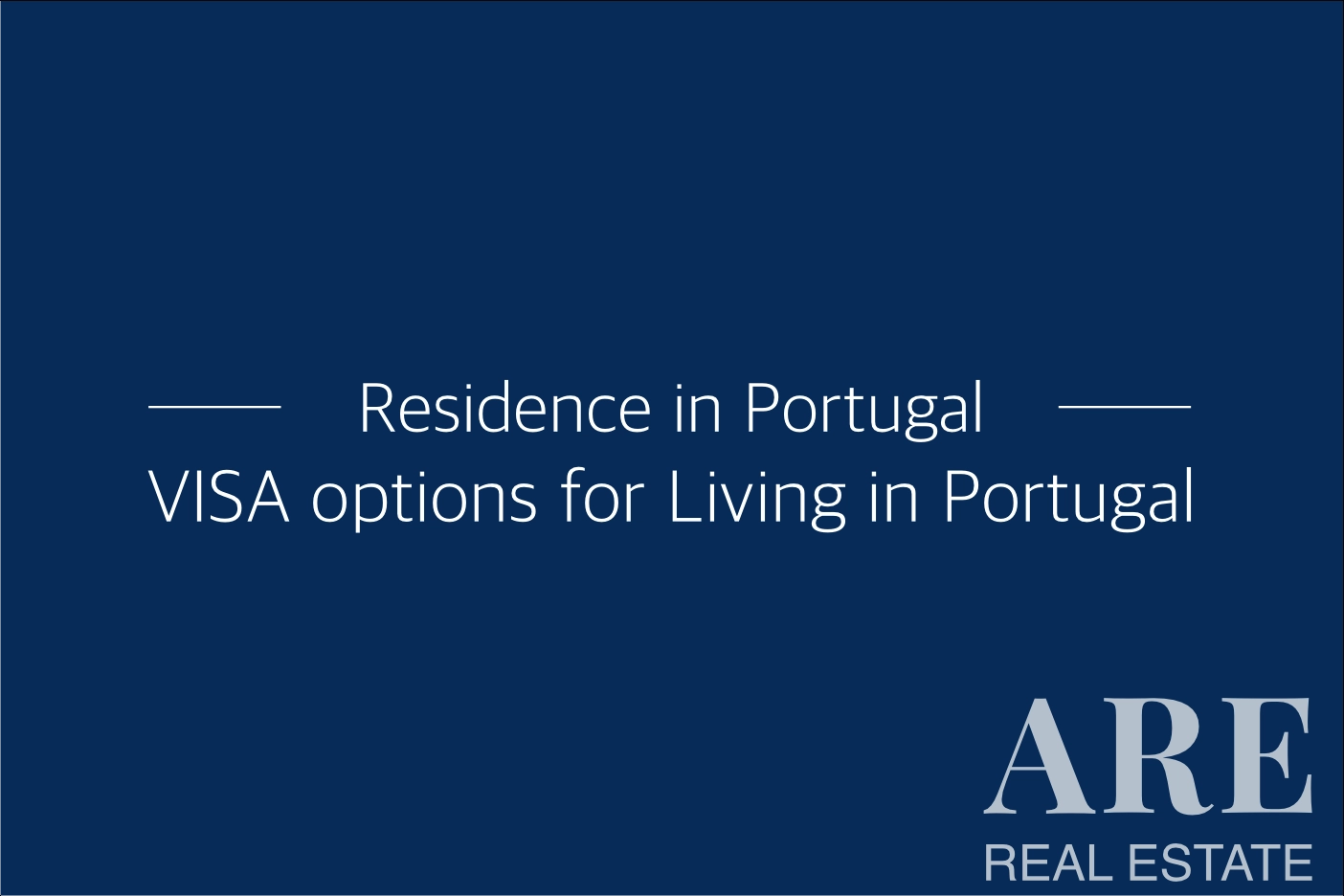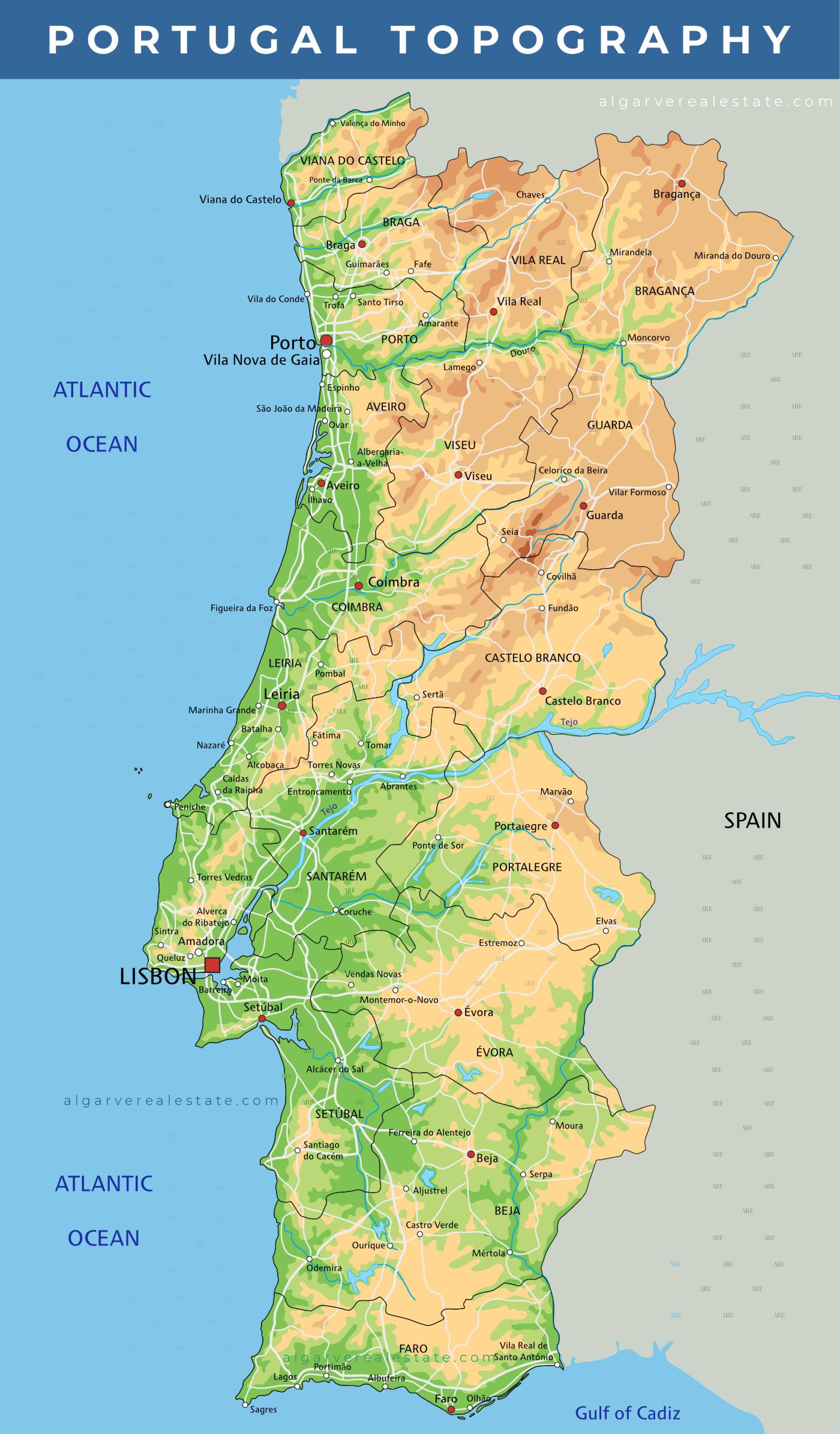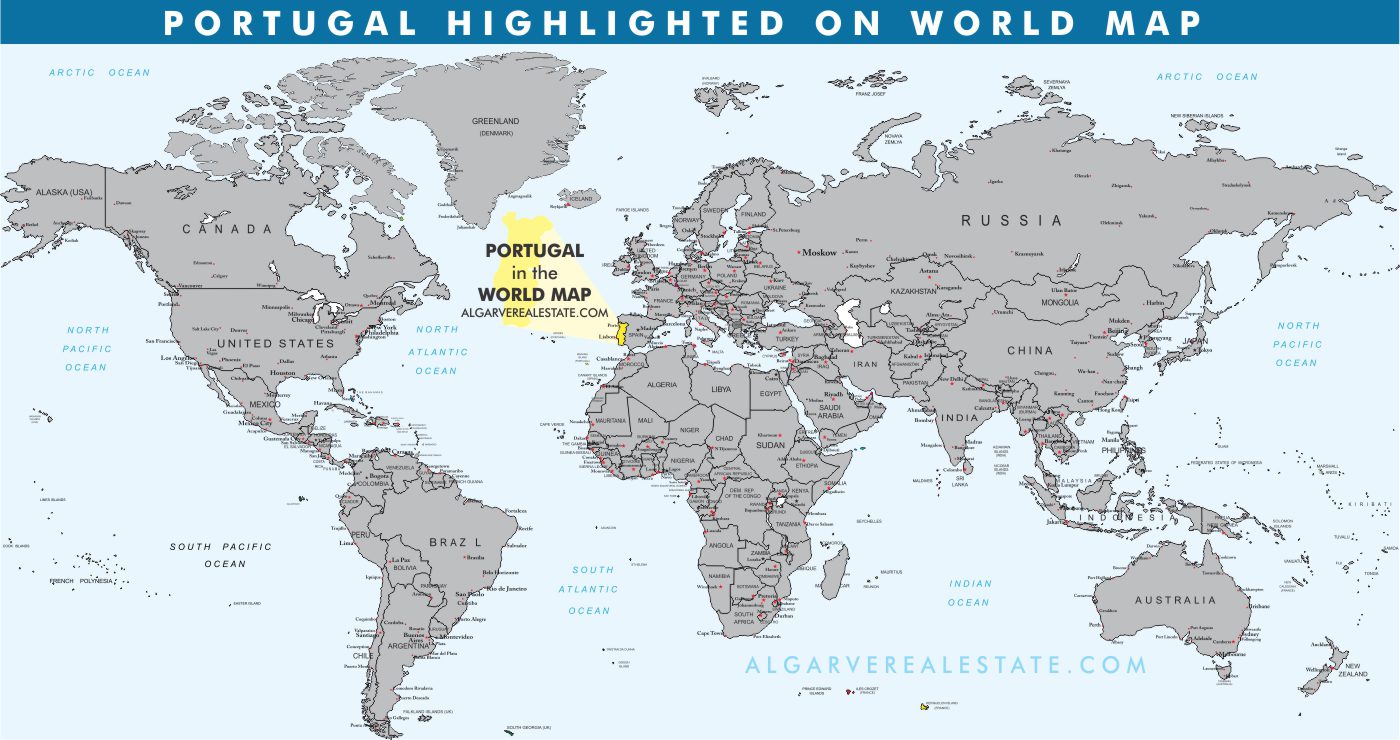
World map with Portugal highlighted in yellow
Portugal is a country in western Europe
Portugal is a country located in southwestern Europe, on the Iberian Peninsula. It is bordered by the Atlantic Ocean to the west and south, and by Spain to the east and north.
Portugal has a latitude ranging approximately from 32° to 42° North, and longitude ranging from 6° West to 9°30′ West.

Portugal highlighted on Europe map
The Size and Dimensions of Portugal
We can drive in less than 6 hours from the most northerly point of Portugal, near Valença do Minho, to the Algarve, in the extreme south of Portugal, covering approximately 650 km (403 miles).
Mainland Portugal has a coastline that stretches approximately 850 kilometers (528 miles) along the Atlantic Ocean from north to south. In terms of east to west, Portugal’s width varies due to its irregular shape, ranging from a minimum width of around 145 kilometers (90 miles) to a maximum width of approximately 270 kilometers (167 miles) at its widest point.
Portugal inside Europe
Portugal is uniquely positioned as the westernmost country of mainland Europe, and its geography has been key in shaping its path throughout history and its current international connections. It’s part of the European Union and uses the Euro, with an economy that’s supported by a mix of services, tourism, robust agricultural practices, and a growing technology sector. Culturally, Portugal has left its mark on Europe, particularly with its traditional music genre Fado, which has gained international recognition. Its varied climate and geography attract tourists to both its renowned coastal regions like the Algarve and vibrant urban centers such as Lisbon and Porto. Portugal contributes to and benefits from European Union policies, particularly in economic development. In 2023, the Portuguese language ranks as the eighth most spoken language in the world, with 263.6 million speakers.

the Portuguese language ranks as the eighth most spoken language in the world, with 263.6 million speakers.
Questions and Answers about Portugal in Europe
What are Portugal’s borders with other countries?
Portugal is bordered by Spain to the east and north. To the west and south, it is bordered by the Atlantic Ocean. This means Portugal shares a land border only with Spain.
Do Portuguese passport holders need to go through border control to enter Portugal from another Schengen country?
No, Portuguese citizens carrying a Portuguese passport do not usually need to go through border checks when entering Portugal from another country in the Schengen Area due to the common travel area policies. However, spot checks can still occur, and in some cases, like increased security measures or health checks, they may be required to pass through border control. It’s always advised to carry a passport or ID card when traveling.
What is the process for Portuguese passport holders entering Portugal from a non-Schengen country?
Portuguese citizens must go through border control and present their passport when entering Portugal from a non-Schengen country. They will undergo a standard entry check, where they may be asked to show proof of return or onward travel, means of support during their stay, and other relevant documents depending on the purpose of the visit.
Do Portuguese passport holders need a visa to travel within the European Union?
Portuguese citizens do not need a visa to travel to other EU countries due to freedom of movement for EU nationals within the European Union. However, for stays longer than 90 days in another EU country, they may need to register their presence and comply with local requirements.
Can Portuguese passport holders cross other EU countries’ borders freely?
Yes, Portuguese passport holders can cross borders freely within the Schengen Area without the need for border checks. Outside the Schengen Area, they must adhere to the specific entry requirements of the non-Schengen EU countries they are visiting.
Portugal and the Schengen Area
Portugal is included in the Schengen Area, one of the major achievements in European integration is a zone in Europe created to facilitated easier travel and trade between member countries, promoting economic growth and cultural exchange. From it, 26 countries have abolished their internal borders, for the unrestricted movement of people. In countries within this area, there are no passport controls or border checks for individuals travelling between them. It’s named after the Schengen Agreement, which was signed in Schengen, Luxembourg, in 1985.
The Schengen Area comprises most European Union countries, with 22 EU member states participating in the agreement.
EU Member States in the Schengen Area:
- Austria
- Belgium
- Czech Republic
- Denmark
- Estonia
- Finland
- France
- Germany
- Greece
- Hungary
- Italy
- Latvia
- Lithuania
- Luxembourg
- Malta
- Netherlands
- Poland
- Portugal
- Slovakia
- Slovenia
- Spain
- Sweden
Non-EU Member States in the Schengen Area:
- Iceland
- Norway
- Switzerland
- Liechtenstein
EU Member States not part of the Schengen Area:
- Bulgaria
- Croatia
- Cyprus
- Romania
- Ireland
Basics of the Schengen Area
The basic idea is that if you have a visa from any Schengen country, you can visit the others without extra visas for up to 90 days, as long as it’s for things like travel or business. If you’re a citizen of a Schengen country, you don’t need to pass through border checks when traveling to other Schengen countries, but you should always have some ID on you. There can be spot checks inside Schengen countries if there’s a need for extra security. Anyone coming into the Schengen zone from outside has to go through regular border security so the area stays safe. The countries in the Schengen Area also work together on police and legal matters to help keep everything secure without the internal border checks.


